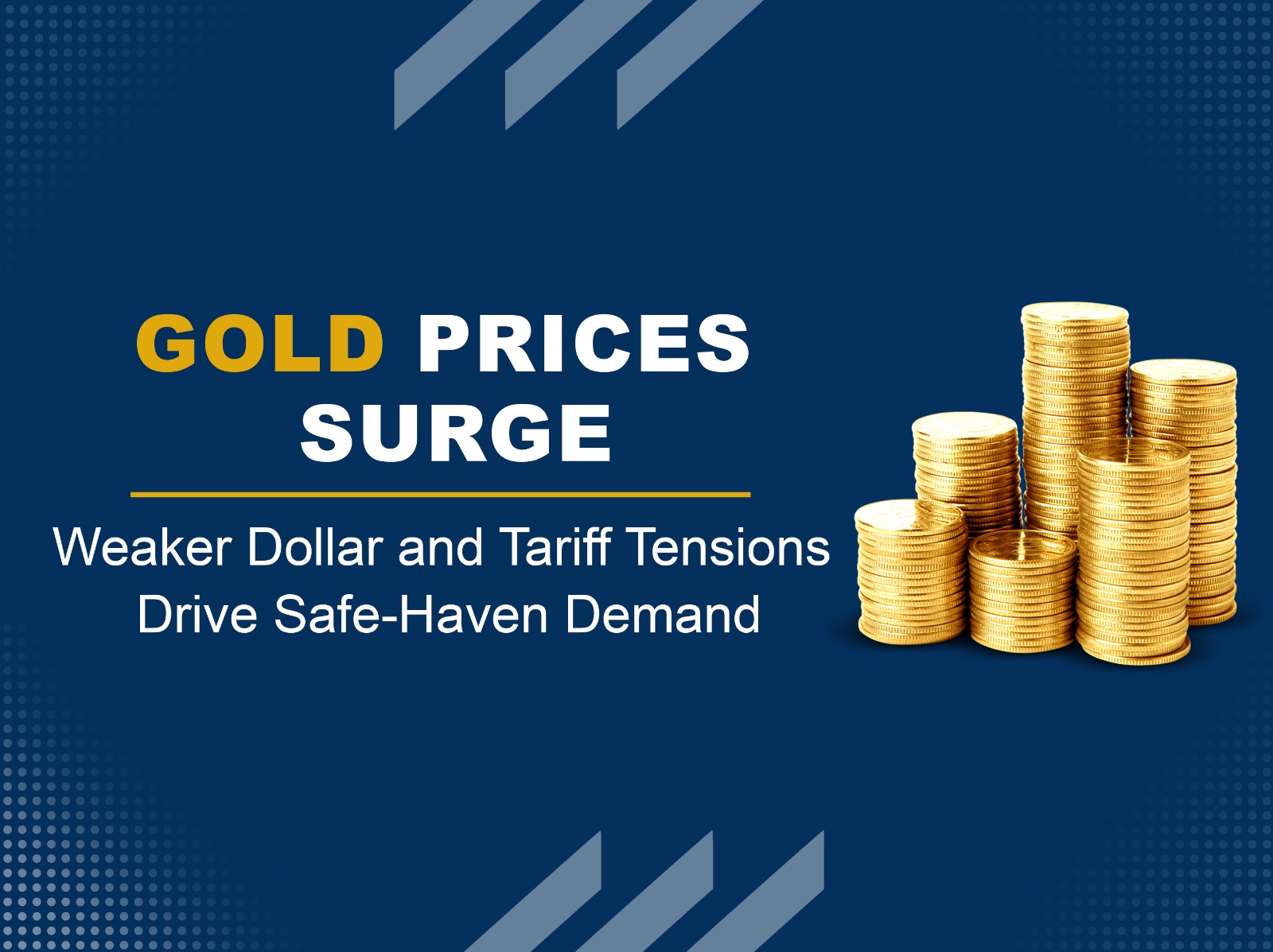Gold Prices Surge Amid Weaker Dollar and Trade Tariff Uncertainties Ahead of Critical Deadline


Gold prices have experienced a notable upswing recently, primarily propelled by the weakening of the US dollar and escalating uncertainties surrounding trade tariffs as key deadlines approach. This precious metal’s role as a safe haven asset becomes ever more pronounced in periods of geopolitical and economic instability, making it a focal point for investors globally. The interplay between currency fluctuations and tariff negotiations is significantly influencing commodity markets, with gold at the forefront.
The inverse relationship between the US dollar and gold is a well-documented phenomenon. When the dollar weakens against other currencies, gold priced in dollars becomes more affordable for foreign investors, stimulating demand. Recently, the US dollar index has declined amid mixed economic data and dovish signals from the Federal Reserve, triggering a surge in gold prices.
This dynamic is critical for understanding the current commodity price movement and the renewed investor interest in gold.
Trade tensions, particularly between major economies, are exacerbating market volatility. Tariff-related uncertainties ahead of looming deadlines are causing hesitancy among businesses and investors alike, fostering a risk-averse environment.
The uncertainty surrounding trade policies directly feeds into the gold market, as investors seek stability amid unpredictable fiscal landscapes.
From a technical standpoint, gold prices have broken through critical resistance levels, confirming bullish momentum.
These indicators signal a sustained uptrend, suggesting that gold may continue to climb in the short to medium term.
Multiple macroeconomic variables reinforce gold’s attractiveness as an investment:
These elements collectively underpin the robust demand for gold seen in recent weeks.
Looking ahead, gold is poised to maintain its upward trajectory unless significant shifts occur in monetary policy or trade negotiations.
Market watchers should monitor key economic indicators and geopolitical developments closely to gauge gold’s future path.
Gold’s resurgence reflects complex interactions between currency movements, trade policy uncertainties, and broader economic conditions. As these factors evolve, gold remains a pivotal asset for investors seeking security and portfolio diversification. Monitoring these trends closely will be essential for anticipating future market behavior.